#National-Guard-bugler
Photo
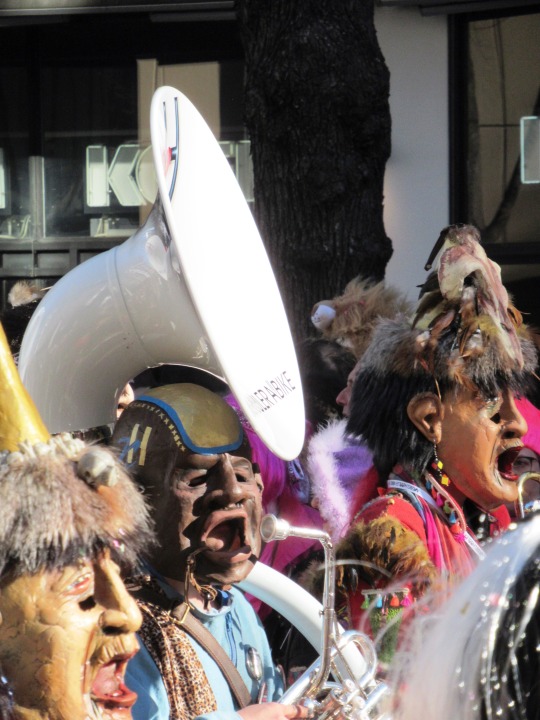
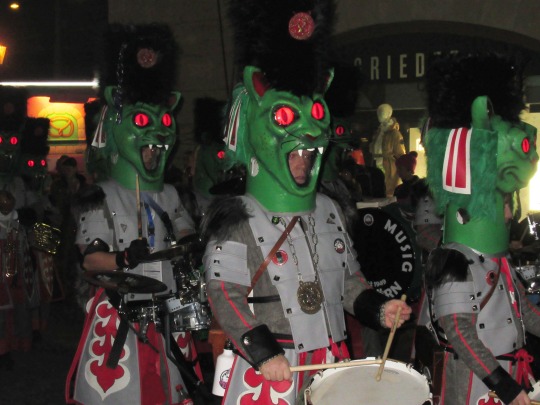
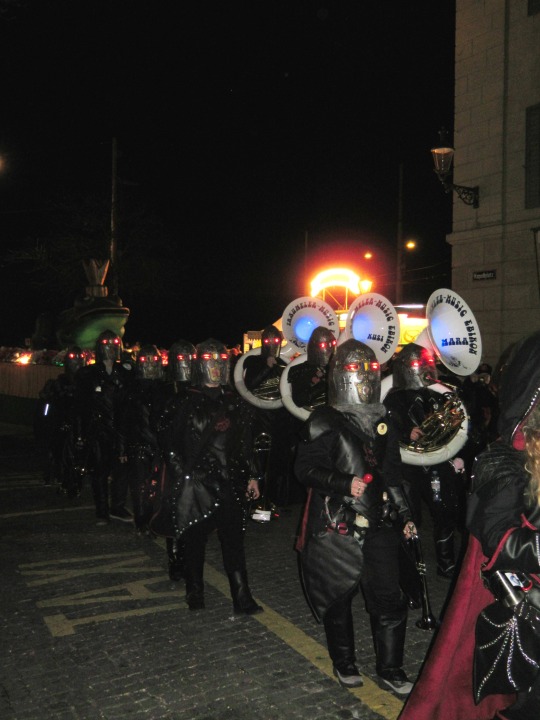
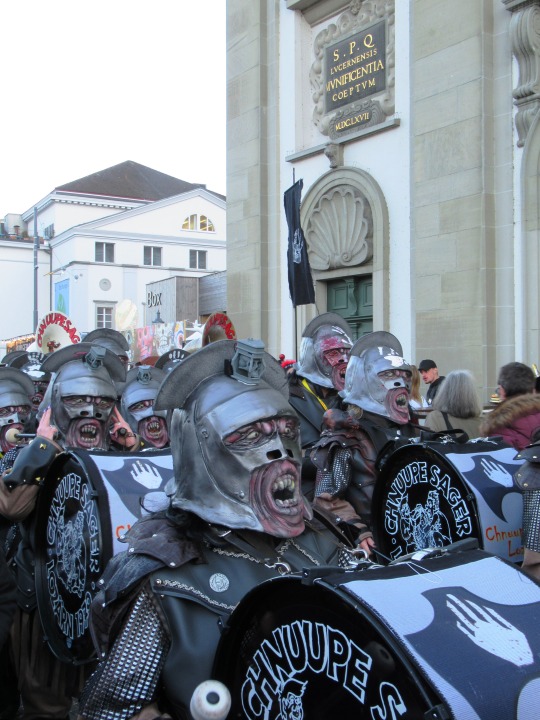

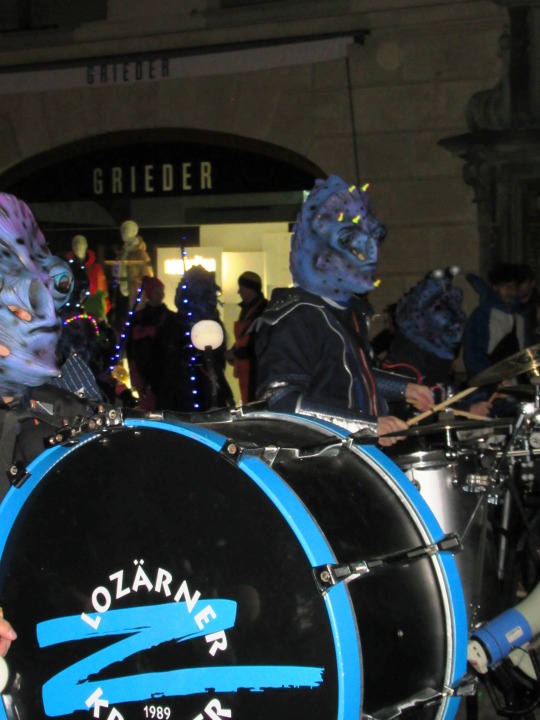

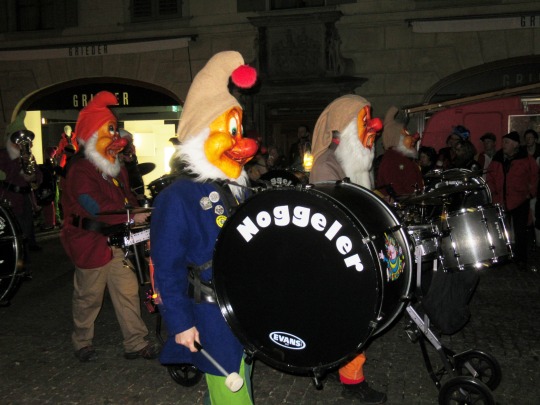
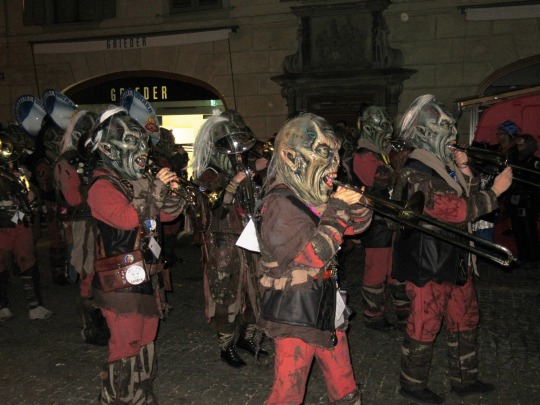
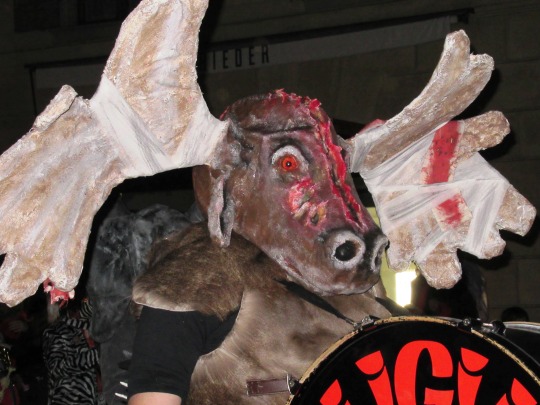
Marching Music Day
March forth to the rhythm of life on Marching Music Day every March 4. In honor of dedicated musicians and performers of many diverse styles and backgrounds, Marching Music Day celebrates all varieties of the art forms bringing us “music on the move.”
For centuries, the beat of a drum has kept military units moving in unison. From the training field to the battlefield, the football stadium to the Broadway stage, small gyms, auditoriums and grand arena spectacles, fifers, pipers, buglers, drum corps, marching bands, parade groups, drill teams and color guards bring music to life to the delight of millions of performers and spectators.
The military roots of the drum corps have evolved into an art form which moves us during somber memorials and thrills us with their ability to perform delightful music while executing intricate routines with exact precision. Drill squads, marching bands, drum lines, and drum corps name but a few of the many styles of marching music which have developed over the years, engaging hundreds of thousands of performers of all ages, abilities and experience levels.
We see marching music in schools, military units, community celebrations and local auxiliaries. The music is as varied as the ensembles themselves. Instruments may be limited to brass in some settings or may include woodwinds and electric guitars in others. Dance teams, baton twirlers and color guards perform to soundtracks ranging from traditional, standard marches to rock and roll, jazz, contemporary and electronic dance music.
And marching music keeps changing! Spectacular string bands incorporate their own unique sound and elaborate costuming. Technology has brought about the production of lighter, electronic and digital instruments making it possible for musicians to march with violins, cellos, basses and synthesizers to entertain crowds in unique and creative new ways.
HOW TO OBSERVE
Support your local marching music groups by attending their performances, backing their competitions, contributing to their endeavors or becoming one of their musicians. Whether it’s through a school, a veterans group or an independent ensemble, they will appreciate your support.
HISTORY
Drum Corps International founded Marching Music Day to celebrate marching music as an engaging and ever-expanding art form around the world, and to help celebrate Music In Our Schools Month. As an ideal play on words, March Fourth was chosen. The Registrar at National Day Calendar declared the day to March fourth into celebration annually, beginning in 2017.
Source
#Marching Music Day#MarchingMusicDay#4 March#Guuggenmusig#winter 2020#original photography#Näbelhüüler#Chnuupesager#Luzern#Lozärner Fasnacht#Lucerne Carnival#Switzerland#Bohème Musig#Lozärner Kracher#Leuechotzeler#Noggeler#Chatzemusig#not really a marching music#but very similar#Hügü Schränzer#grend#mask#costume
3 notes
·
View notes
Link
NATIONAL HOLIDAY OF REVERENCE AND RESPECT!
We are humbled and honored here at the 59 Veterans Project to commemorate MEMORIAL DAY. And remember veterans who gave "...the last full measure of devotion" to our great nation.
They are more than ranks and names and gravestones and crosses and memories. They are the timeless heroes of courage and goodness and ultimate sacrifice. They remain the best from among all of us!
And we will never forget them.
So...
Citizens: Attention!
Color Guard: 21-Gun Volley!
Bugler: Sound TAPS!
America: Slow Hand Salute!
🇺🇸️💖🇺🇸
LONE URL: https://lnkd.in/gpDKys7
1 note
·
View note
Text
From the Desk of Decaying Phoenix: The Truth About the Tomb of the Unknown Soldier




Welcome back my little chicks for another horror filled story. In my travels over the world, I have been told many stories myself, but one I find truly inspiring is the truth behind The Tomb of the Unknown Soldier.
Let me grant you a bit of background on this tomb. On March 4, 1921, Congress approved the burial of an unidentified American soldier from World War I in the plaza of Arlington National Cemetery's new Memorial Amphitheater. The journey of the World War I Unknown to Arlington began in France in September 1921, when four American bodies were exhumed from unmarked battlefield graves. U.S. Army Sgt. Edward F. Younger (a World War I veteran who was wounded in combat and received the Distinguished Service Medal) selected the Unknown Soldier from among four identical caskets at city hall in Chalons-sur-Marne, France. The chosen casket was then transported to Washington, D.C. aboard the Navy cruiser USS Olympia. Those remaining in France were interred in the Meuse-Argonne American Cemetery, one of several dozen foreign cemeteries operated by the American Battle Monuments Commission.
The World War I Unknown arrived in Washington on November 9, 1921 and lay in state at the Capitol Rotunda for two days. Some 90,000 visitors lined up to pay their respects. On Armistice Day (November 11) 1921, body bearers from the Army, Navy and Marine Corps transported the casket to a caisson for the large ceremonial procession to Arlington National Cemetery. At the Memorial Amphitheater, President Warren G. Harding officiated at a ceremony attended by over 5,000 people. The U.S. Marine Corps band played the national anthem, followed by the Army Chief of Chaplains' invocation and two minutes of silence. President Harding then addressed the crowd and placed the Medal of Honor and Distinguished Service Cross on the casket. Foreign dignitaries added more medals. The ceremony then moved to the east front of the Amphitheater, where, as a battery cannon fired three salvos, the casket was lowered into the crypt. A bugler played Taps, followed by the battery firing a 21-gun salute. The Unknown Soldier was home.
In the following years, thousands of people flocked to Arlington National Cemetery to pay their respects at the Tomb of the Unknown Soldier, which soon came to symbolize the sacrifices of all American service members. While the Tomb drew many respectful mourners, it also became a tourist destination. Photographers stationed themselves by the Tomb and charged people to take their picture, and visitors left trash strewn around the site. In 1926, Congress established a military guard to protect the Tomb during daylight hours. Since midnight on July 2, 1937, the Army has maintained a 24-hour guard over the Tomb. Sentinels of the 3rd U.S. Infantry, "The Old Guard," assumed these duties on April 6, 1948, maintaining a constant vigil regardless of weather conditions.
There, now with that little bit out of the way, let’s tell you the real story. There is no Soldier buried in that crypt, here is the truth.
On March 4th, 1921 Congress approved the burial, or should I say incarceration of an immortal. Yes you read that correctly, there is an immortal buried at Arlington National Cemetery. I’m sure you’re all wondering what immortal is locked up. Well? The tomb was created for a soldier, just not a human soldier, hidden within the tomb is Raziel, one of the archangels. Not much is known about this immortal, all that we do know thus far is that it doesn’t require food or water. The tomb has had to be modified several times throughout the years to help study this creature underground. After various tests we still don’t know what is actually keeping it alive with no food or water. The Angel Raziel just kind of floats there in the middle with it’s arms crossed and it’s head bowed. What appears to be a sword can be seen hanging from it’s waist. We have tried numerous times to attempt to communicate with Him, all to no avail.
Today Raziel did something different. He looked straight up at the ceiling above him as though looking up at the sky, his eyes squinted a bit. What could be coming? The angel has been getting fidgety as of late. He looks tense, what does he know that we don’t. Raziel can be seen muttering something under his breath, but we can’t tell what it is. I’m looking at past reports to see if this has ever happened before, but it doesn’t appear as though it has.
No, this can’t be, Raziel is moving, his arms are uncrossing and his wings are spreading...
Well my little chicks, this is where our story ends, this was all that was recovered from the remains of what was once known as D. C. sweet screams my little chicks.
1 note
·
View note
Text
Amazon Featured Book of the Week
Amazon Featured Book of the Week
Here’s this week’s Featured Book-of-the-Week available now on Amazon.com!
Notes From the Trenches: A Musician’s Journey Through World War I
by Gary H. Foster
(5 Stars – 10 Customer Reviews)
Price: $29.95
Gary H. Foster’s “Notes From the Trenches: A Musician’s Journey Through World War I.” America found itself drawn into the Great War overseas, and the author’s grandfather, Leo Foster, bugler for…
View On WordPress
#A-Musician&039;s-Journey-Through-World-War-I#amazon#book marketing#book promotion strategy#Gary H. Foster#Leo Foster#market your self-published book#National-Guard-bugler#Notes-From-the-Trenches#self publishing a book#self-publishing authors#wwI
0 notes
Text
Shabbat Zachor: Amalekites, Egyptians, and a Promise
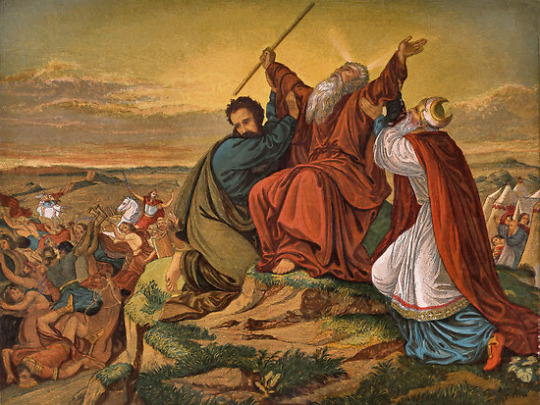
The Sinai Desert was still pitchy-black when Lt. Djer’s adjutant, Corporal Tem, shook his commander’s shoulder to awaken him. The lieutenant immediately arose—his training at the Royal Egyptian Army Military Academy (Heliopolis) stood him in good stead. He sat on the edge of his cot, blinking and collecting his thoughts.
Today, we pull patrol-duty in our Northwestern Sector, he thought, I must set a good example for my troops.
“It will be blasting-hot today in the wilderness, Sir,” whispered the corporal.
The lieutenant smiled ruefully. “It’s always hot in this furnace, Corporal,” he said, tersely. “Have the sergeant-major rouse the troops—quietly. We are on full combat alert, as befits us fortunate soldiers who guard the Blessed Boundaries of Holy Mother Egypt from any invaders or ravagers.”
The corporal nodded, saluted, and disappeared into the dark.
The lieutenant did his morning toilet, dressed in his cotton undergarment, and began buckling on his bronze body armor. Djer’s armor fitted a bit more snugly than usual. He had gained a few pounds on his last leave to his home village. His parents raised sweet dates, plums and figs on a little farm close to the Nile River. Pa’s sweet melons were legendary for their size, heft, and color, and he regularly won first-prize in the farmers’ market. Patting his belly, Djer left the tent to inhale the pure, sweet desert air, tinged by a salty breeze from the Sea of Reeds to the north.
“We await your orders, Sir,” came a voice from the shadows, which he recognized as that of Sergeant-Major Joser, his aide-de-camp in commanding 18th Regiment, Royal Egyptian Cavalry (“Jaws of Anubis”). “Will you be desirous of mounted chariots, Sir? It would not take but a half-hour to ready them for patrol and possible combat.”
Djer had thought about this the previous evening, and decided. “It will not do for the sake of maintaining mounted silence to take the chariots,” he replied, “on the chance that we encounter a desert tribe of Bedouin, and require a surprise attack. No, Sgt-Major; this day, our troopers will ride their mounts.”
“Very good, Sir,” said Sgt.-Major Joser, “I will have the troops ready their horses. All will prepare the saddles meant for warfare, not parade.”
“Do so,” commanded Lt. Djer.
Less than a hour later, the copper bugles sounded, and the 18th Regiment was under way.
“Which direction, Lieutenant?” asked the Sergeant-Major.
“Let us head towards the Sea of Reeds,” answered the lieutenant, “just to find any stragglers from that escaped mob of Israelite slaves. We are under orders to—deal with them.”
“Deal with them by what means, Lieutenant?” asked the Sergeant-Major. He was a grizzled veteran of many encounters with Egypt’s many enemies. An eye-patch gave evidence of the Old War with the Nubians.
“By any means necessary—including killing,” returned the lieutenant. I hate to think of murdering innocent women and children, even if they are Israelite, he thought. Still, we are under the orders of Capt. Sobek, who is in constant touch with the High Command at Royal Egyptian Army Headquarters. I have no choice.
The soldiers rode along in silence, whispering only when necessary. A blood-red sun was rising in the east. There was no sound, except the creaking of saddlery and the clank of lances against bronze armor.
“Sir,” said the Sergeant -Major, “We must halt, to allow Siptah, the Jebusite Scout, to study the trail and tell us what to expect.”
The lieutenant nodded. Siptah, agile and alert despite his advanced years—he was at least forty—practically vaulted over the head of his horse, and, lying on the ground, began sniffing eagerly, like a desert dog. Djer looked on in disgust—how could a human being, made in Osiris’s image, degrade himself into sniffing at the offal of passing animals? Still, he had to grant Siptah some credit—the scout was nearly always correct in his trail-judgment, and—besides an uncomfortable, earthy smell the scout had—Why can’t he wash more often? Djer would ask, holding his breath while he spoke with him—he was a pleasant enough fellow, and a great warrior, besides.
“What news, Scout?” he asked.
The elderly Jebusite grinned and rose, not bothering to dust the desert-sand off of his arms and legs. Arms akimbo, he stood before the lieutenant, not bothering to salute.
“If it please the Lieutenant, Your Worship—” began Siptah.
“Just Lieutenant will do, Siptah,” said Djer, fanning the air before his face. How can the poltroon live with himself? he thought, breathing through his mouth, “Give your report, please.”
“Israelites passed by—oh, perhaps one-two hours ago,” said Siptah.
“Good; we will shadow them, and make certain they are moving well out of Imperial Territory,” answered Lieutenant Djer.
Siptah raised one gnarly hand. “I have more to report, Lieutenant,” he said, and his grinning face grew grim, “There is also a war-party of Amalekites following the Israelites, perhaps just one-half hour behind.”
A voice from behind Djer called out gleefully, “What luck! Let the Amalekites finish what we ought to have done to those evil Israelites!”
Without turning, the lieutenant called out, “At ease, Corporal Henut! I called for silence in ranks!”
“Begging your pardon, Lieutenant,” returned Henut, “but I have more than a bone to pick with those abominable Israelites—they laid waste to my homeland, including my father’s little idol-shop! That Invisible God of theirs, jealous no doubt of my father’s stock-in-trade, caused it to be crushed beneath the weight of that insidious hailstorm. I hate those Israelites with every fibre of my being.”
Nodding at the Sergeant-Major, Djer ordered the detachment to halt.
“Military Police Detail!” ordered the lieutenant, “Apprehend Corporal Henut, and bring him to me.”
Henut found himself bound in papyrus-ropes, standing before his commander.
“Corporal Henut,” said the lieutenant, “for speaking out in ranks, and for contravening a direct order—”
“Begging the lieutenant’s pardon,” interrupted Henut, “What order was that?”
“Our orders are to shadow the Israelites, not to attack them,” answered the lieutenant, “nor to aid or abet any other people or nation who choose to attack them. We are merely in an observatory capacity.”
“Yes, Sir,” said Henut, sullenly.
“And for your outburst,” answerered Djer, “I am reducing you in rank to Private, and fining you your next three weeks’ wages. I run a strong, proud outfit, Private, and I will not have rapscallions such as yourself besmirching our unit’s record. MPs! Keep him under close guard, and, once we return to the Forward Operating Base, he is to go into the stockade for one week.”
The MPs led Henut away; because the unit was in the field, he was allowed to re-mount his horse, under their watchful guard. The detachment spurred on, again.
“What is that noise I hear, Sir?” asked the Sergeant-Major, “Is it the sound of rejoicing? Are the Israelites observing one of their pagan festivals?”
Lt. Djer listened. “It is not the sound of rejoicing or singing,” he returned, “It is the sound of war—hear the women’s screams!”
As the cavalry detachment mounted the hill, they beheld a ghastly sight: a band of Amalekite Bedouin marauders were attacking an Israelite refugee line—only, instead of attacking in front of the line, where the soldiers and young men were, the Amalekites were deliberately slaughtering helpless elderly, women, and even children.
“What shall we do, Sir?” asked the Sergeant-Major, “Our orders are explicitly to shadow the Israelites, and not interfere with their Exodus from our nation.”
“Still,” mused the lieutenant, “The orders said nothing about the deaths of the innocent.”
“What are you suggesting, Sir?” asked the old sergeant-major, already guessing what was on his young commander’s mind.
“Sergeant-Major!” commanded Lt. Djer, himself unstrapping his bronze short sword, as well as his cavalryman’s knife and shield, “I order you to have the bugler sound the ‘charge,’ so that we can redress the imbalance between civilian Israelites and armed desert bandits.”
“You heard the Lt. Djer,” called out the Sergeant-Major to the young bugler, “Prepare to sound the charge, on his order!”
“Wait a second,” said Djer, half-turning in his saddle to face his troops.
“Soldiers of Imperial Egypt,” he said in a stentorian voice, “I am commanding you to join me in defending a group of helpless elderly, women and children from a mob of murderous Amalekites. You know our enemy: he is merciless, and so must we be. If you bear any ill will towards the Israelites, you may remain under guard back here with our Military Police, and I will arraign you later for refusing a direct order from me, your commander. But I hope and expect that every man-jack of you will gain great honor for both our Mother Egypt this day, and for Anubis, for whose ferocity and fairness our regiment is named. Will you join me?”
Sadly, the remaining record of the 18th Regiment of Horse (“Jaws of Anubis”), Border Patrol Detachment, Royal Egyptian Army, has been lost. May Osiris welcome their glorious dead,and give plaudits to their triumphant heroes.
Rabbi David Hartley Mark is from New York City’s Lower East Side. He attended Yeshiva University, the City University of NY Graduate Center for English Literature, and received semicha at the Academy for Jewish Religion. He currently teaches English at Everglades University in Boca Raton, FL, and has a Shabbat pulpit at Temple Sholom of Pompano Beach. His literary tastes run to Isaac Bashevis Singer, Stephen King, King David, Kohelet, Christopher Marlowe, and the Harlem Renaissance.
#progressive judaism#judaism#jewish#torah study#drash#shabbat zachor#shabbos#sabbath#amelek#parsha#weekly parsha#rabbi david hartley mark#oneshul#purim
3 notes
·
View notes
Link
Soldiers assigned to U.S. Army 1st Battalion, 3d U.S. Infantry Regiment (The Old Guard) and a bugler from the U.S. Army Band, “Pershing’s Own,” conduct modified military funeral honors for U.S. Army Master Sgt. Nathan Goodman in Section 60 of Arlington National Cemetery.
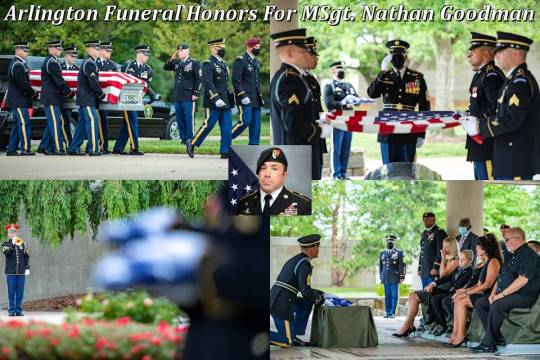
0 notes
Photo


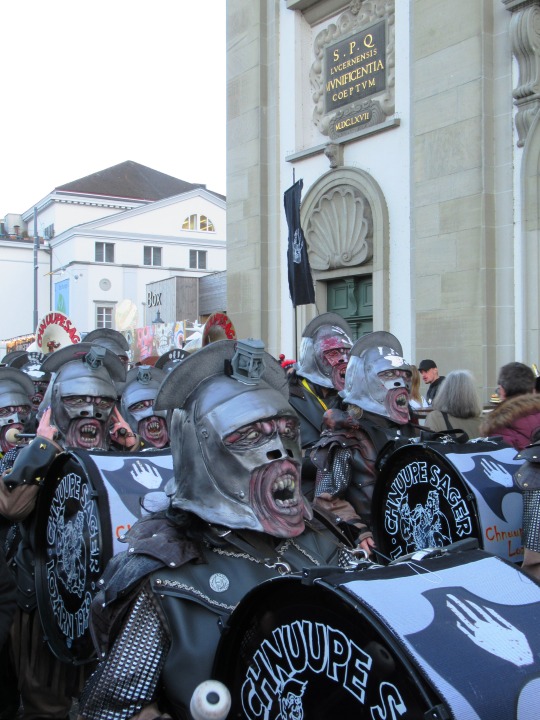
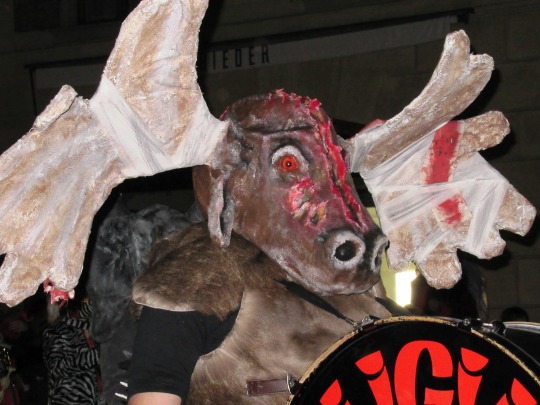
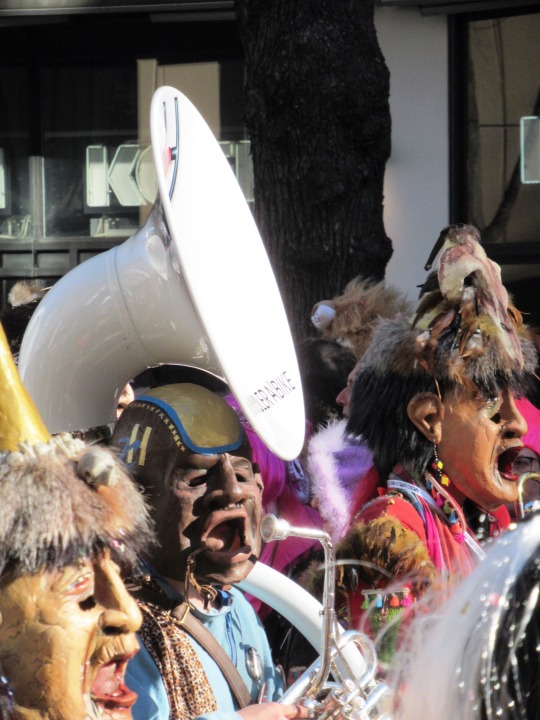
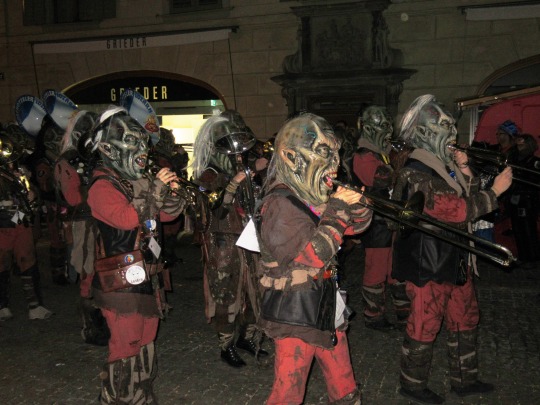
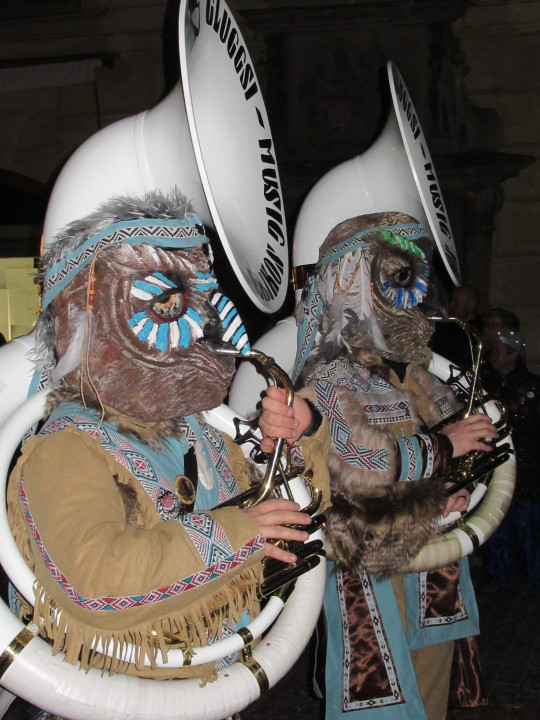
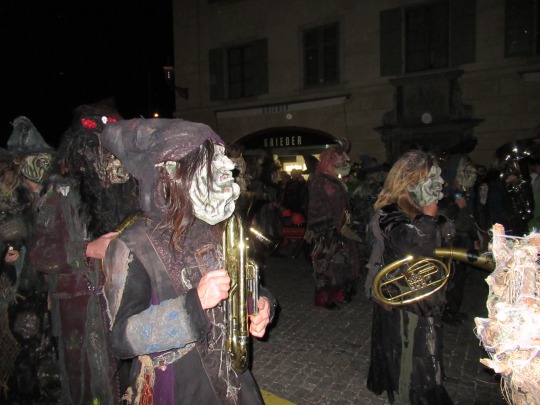
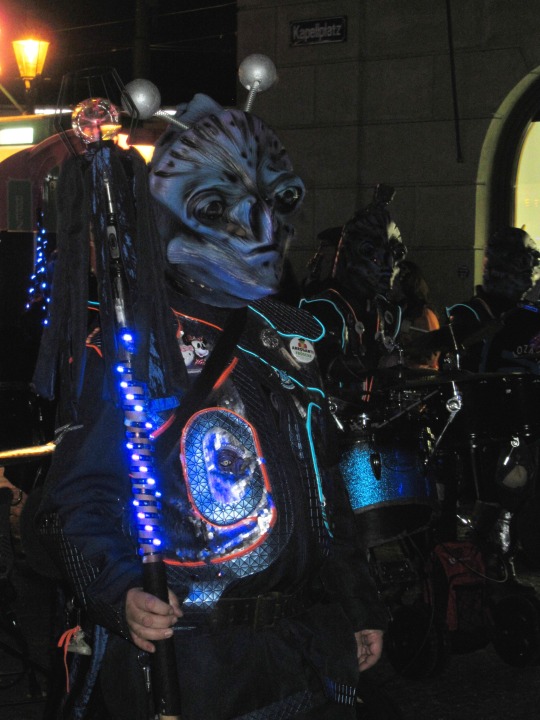

Marching Music Day
March forth to the rhythm of life on Marching Music Day every March 4. In honor of dedicated musicians and performers of many diverse styles and backgrounds, Marching Music Day celebrates all varieties of the art forms bringing us “music on the move.”
For centuries, the beat of a drum has kept military units moving in unison. From the training field to the battlefield, the football stadium to the Broadway stage, small gyms, auditoriums and grand arena spectacles, fifers, pipers, buglers, drum corps, marching bands, parade groups, drill teams and color guards bring music to life to the delight of millions of performers and spectators.
The military roots of the drum corps have evolved into an art form which moves us during somber memorials and thrills us with their ability to perform delightful music while executing intricate routines with exact precision. Drill squads, marching bands, drum lines, and drum corps name but a few of the many styles of marching music which have developed over the years, engaging hundreds of thousands of performers of all ages, abilities and experience levels.
We see marching music in schools, military units, community celebrations and local auxiliaries. The music is as varied as the ensembles themselves. Instruments may be limited to brass in some settings or may include woodwinds and electric guitars in others. Dance teams, baton twirlers and color guards perform to soundtracks ranging from traditional, standard marches to rock and roll, jazz, contemporary and electronic dance music.
And marching music keeps changing! Spectacular string bands incorporate their own unique sound and elaborate costuming. Technology has brought about the production of lighter, electronic and digital instruments making it possible for musicians to march with violins, cellos, basses and synthesizers to entertain crowds in unique and creative new ways.
HOW TO OBSERVE
Support your local marching music groups by attending their performances, backing their competitions, contributing to their endeavors or becoming one of their musicians. Whether it’s through a school, a veterans group or an independent ensemble, they will appreciate your support.
HISTORY
Drum Corps International founded Marching Music Day to celebrate marching music as an engaging and ever-expanding art form around the world, and to help celebrate Music In Our Schools Month. As an ideal play on words, March Fourth was chosen. The Registrar at National Day Calendar declared the day to March fourth into celebration annually, beginning in 2017.
Source
#Marching Music Day#NationalMarchingArtsDay#MarchingMusicDay#4 March#Lozärner Fasnacht#no Lozärner Fasnacht this year 2021#that was very hard for me#almose unbearable#winter 2020#Tagwache#Guuggenmusig#Güdisdienstag#Schmutziger Donnerstag#SchmuDo#grend#mask#costume#not really a marching music#but close enough#but very similar#Lozärner Kracher#Näbelhüüler#Chatzemusig#Gluggsi Musig#Hügü Schränzer#Müsali Musig#Leuechotzeler#Noggeler
0 notes
Text
The many firsts for 2020 Republic Day parade - india news

This year’s Republic Day parade had many firsts to it. A look at some of the debuts this time.Wreath-laying at National War MemorialFor the first time on Republic Day, Prime Minister Narendra Modi laid a wreath at the National War Memorial. Until last year, tributes were paid to martyrs at the Amar Jawan Jyoti at India Gate. The PM inaugurated the memorial on February 25, 2019. After the PM laid the wreath, the guard commander gave ‘salami shastra’ (present arms) and ‘shok shastra’ (reverse arms). This was followed by the buglers sounding the Last Post and a two-minute silence in honour of the martyrsAttended by the Chief of Defence StaffGeneral Bipin Rawat attended the parade for the first time as Chief of Defence Staff. He was appointed to the top position on December 31. As CDS, Rawat heads the department of military affairs (DMA) in the defence ministry and is the principal military adviser to the defence minister on all matters related to the tri-services. The DMA is an addition to the four existing verticals in the ministry — the departments of defence, defence production, defence research and development and ex-service welfareChoppers in tri-service formationThe main fly-past began with three advanced light helicopters from the Army, Navy and the Air Force. It was the first time that a “tri-service formation” took part in the parade. A defence ministry handout said it depicted jointmanship and synergy among the three services, “which is the essence of today’s modern day warfare.” The formation flew at a speed of 180kmphAnti-satellite (A-SAT) missileThe Defence Research and Development Organisation (DRDO) showcased its anti-satellite weapon for the first time. Mission Shakti was conducted last March when the 19-tonne A-SAT missile struck a Microsat-R satellite orbiting 283km above the earth with pinpoint accuracy, propelling India into an elite space club consisting of the US, Russia and China. The missile could have killed a satellite at a height of 1,000km but India intentionally chose to demonstrate the capability in a low earth orbit to avoid the threat of collisions in space due to the debrisNew marching contingentThe marching contingent of the Corps of Army Air Defence made its debut. The contingent was led by Captain Vikas Kumar Sahu. The President had awarded ‘colours’ to the Corps of Army Air Defence last September in recognition of its distinguished service to the country. Its regimental motto is ‘Akashe Shatrun Jahi’ or ‘Kill the Enemy in the Sky’Apache attack helicoptersThe Indian Air Force’s American-made AH-64E Apache attack helicopters appeared in the Republic Day fly-past for the first time. Five Apaches were among the 45 aircraft that took part in the display. India inked a deal with the US defence giant Boeing in September 2015 for 22 Apaches to modernise the IAF’s assault capabilities to counter ground-based armoured targets and aerial threat. The IAF has already inducted eight Apaches into its fleet at the Pathankot airbaseChinook heavy-lift helicoptersThree CH-47F (I) Chinook heavy-lift helicopters were part of the fly-past on Sunday as the choppers made their parade debut. India ordered 15 Chinooks from the United States in September 2015. The Chinooks have filled a crucial gap in the air force’s heavy-lift capabilities. The choppers can carry 55 troops or 10 tonnes of freight. The Chinook’s main roles include transporting troops, artillery and battlefield resupplyJammu and Kashmir as UTJammu and Kashmir took part in the parade for the first time as a Union Territory. Its tableau was based on the theme ‘Back to Village.’ Last August, the government revoked the special status of the state by scraping Article 370 of the Constitution and also bifurcated J&K into two Union Territories – J&K and Ladakh. The ‘Back to Village’ initiative seeks to take governance and development to rural and inaccessible areas of the region
Read the full article
#24/7newsupdates#3newsupdates#30thnewsupdates#3awnewsupdates#5newsupdates#570newsupdates#58newsupdates#5pmnewsupdates#6newsupdate#680newsupdates#69newsupdates#7newsupdateadelaide#7newsupdategoldcoast#7newsupdateperth#7newsupdateplainsvideo#7newsupdatesydney#7newsupdatesbrisbane#7newsupdatesmelbourne#9newsfireupdates#9newslatestupdates#9newsliveupdates#9newsweatherupdates#9&10newsupdates#92newsupdatesinurdu#9janewsupdatesnow#arynewsupdates#aplatestnewsupdatesintelugu#apnewsupdates#apnewsupdatestelugu#apnewsupdatestoday
0 notes
Text
From the Desk of Decaying Phoenix: The Truth About the Tomb of the Unknown Soldier



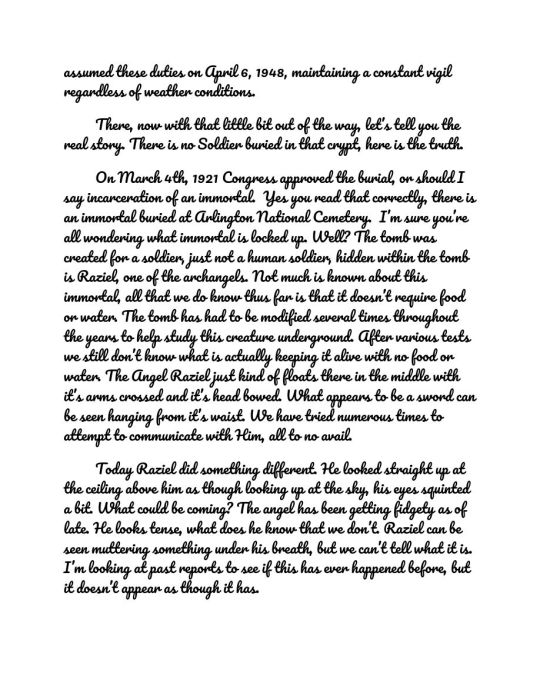

Welcome back my little chicks for another horror filled story. In my travels over the world, I have been told many stories myself, but one I find truly inspiring is the truth behind The Tomb of the Unknown Soldier.
Let me grant you a bit of background on this tomb. On March 4, 1921, Congress approved the burial of an unidentified American soldier from World War I in the plaza of Arlington National Cemetery's new Memorial Amphitheater. The journey of the World War I Unknown to Arlington began in France in September 1921, when four American bodies were exhumed from unmarked battlefield graves. U.S. Army Sgt. Edward F. Younger (a World War I veteran who was wounded in combat and received the Distinguished Service Medal) selected the Unknown Soldier from among four identical caskets at city hall in Chalons-sur-Marne, France. The chosen casket was then transported to Washington, D.C. aboard the Navy cruiser USS Olympia. Those remaining in France were interred in the Meuse-Argonne American Cemetery, one of several dozen foreign cemeteries operated by the American Battle Monuments Commission.
The World War I Unknown arrived in Washington on November 9, 1921 and lay in state at the Capitol Rotunda for two days. Some 90,000 visitors lined up to pay their respects. On Armistice Day (November 11) 1921, body bearers from the Army, Navy and Marine Corps transported the casket to a caisson for the large ceremonial procession to Arlington National Cemetery. At the Memorial Amphitheater, President Warren G. Harding officiated at a ceremony attended by over 5,000 people. The U.S. Marine Corps band played the national anthem, followed by the Army Chief of Chaplains' invocation and two minutes of silence. President Harding then addressed the crowd and placed the Medal of Honor and Distinguished Service Cross on the casket. Foreign dignitaries added more medals. The ceremony then moved to the east front of the Amphitheater, where, as a battery cannon fired three salvos, the casket was lowered into the crypt. A bugler played Taps, followed by the battery firing a 21-gun salute. The Unknown Soldier was home.
In the following years, thousands of people flocked to Arlington National Cemetery to pay their respects at the Tomb of the Unknown Soldier, which soon came to symbolize the sacrifices of all American service members. While the Tomb drew many respectful mourners, it also became a tourist destination. Photographers stationed themselves by the Tomb and charged people to take their picture, and visitors left trash strewn around the site. In 1926, Congress established a military guard to protect the Tomb during daylight hours. Since midnight on July 2, 1937, the Army has maintained a 24-hour guard over the Tomb. Sentinels of the 3rd U.S. Infantry, "The Old Guard," assumed these duties on April 6, 1948, maintaining a constant vigil regardless of weather conditions.
There, now with that little bit out of the way, let’s tell you the real story. There is no Soldier buried in that crypt, here is the truth.
On March 4th, 1921 Congress approved the burial, or should I say incarceration of an immortal. Yes you read that correctly, there is an immortal buried at Arlington National Cemetery. I’m sure you’re all wondering what immortal is locked up. Well? The tomb was created for a soldier, just not a human soldier, hidden within the tomb is Raziel, one of the archangels. Not much is known about this immortal, all that we do know thus far is that it doesn’t require food or water. The tomb has had to be modified several times throughout the years to help study this creature underground. After various tests we still don’t know what is actually keeping it alive with no food or water. The Angel Raziel just kind of floats there in the middle with it’s arms crossed and it’s head bowed. What appears to be a sword can be seen hanging from it’s waist. We have tried numerous times to attempt to communicate with Him, all to no avail.
Today Raziel did something different. He looked straight up at the ceiling above him as though looking up at the sky, his eyes squinted a bit. What could be coming? The angel has been getting fidgety as of late. He looks tense, what does he know that we don’t. Raziel can be seen muttering something under his breath, but we can’t tell what it is. I’m looking at past reports to see if this has ever happened before, but it doesn’t appear as though it has.
No, this can’t be, Raziel is moving, his arms are uncrossing and his wings are spreading...
Well my little chicks, this is where our story ends, this was all that was recovered from the remains of what was once known as D. C. sweet screams my little chicks.
1 note
·
View note
Text
How The 10 Most Popular Dog Breeds Got Their Names by Katie Finlay

Do you ever surprise however dog breeds get their names? Some are thus distinctive it’s onerous to imagine however they even took place, whereas others ar are pretty obvious. Here we’ve taken the ten most well-liked dog breeds within us and that we justify however they got their names.
#1 – retriever
The retriever was originally bred as a hunting dog, most frequently searching aquatic birds and retrieving them for his or her house owners. though the breed will hail from the North American nation, they're from Newfoundland. Even intruder is that the Newfoundland dog comes from Labrador! This naming system happened as a result of the retriever was most frequently wont to retrieve birds afraid within the Labrador Sea.
#2 – German shepherd Dog
The German shepherd Dog features a fairly easy name and reflects it’s full heritage. The breed could be a German dog won't to herd sheep and alternative eutherian mammal, moreover as shield them from alternative animals and strange folks. whereas few are used as swarming dogs these days, they’ve become a flexible breed capable of the many different jobs.
#3 – retriever
Another hunting dog bred for retrieving aquatic bird, the retriever hails from a European country. though the name doesn’t have a lot of a cited history, it’s speculated that it had been wont to merely describe the dog we tend to see before the US these days – a gold-colored gun dog.
#4 – hound
The hound could be a tiny scent hound used to chase prey like rabbits and cervids. coming back from the European nation, the precise origin of the name isn’t clear, though there are several cheap assumptions. Some suppose it derives from the French words “beguile,” or “bugler,” which means “open throat,” and “to bellow,” severally. alternative prospects embrace the word “beag,” which means “little,” that comes from the Old English, Gaelic, and French languages.
#5 – working dog
The Bulldog was capably named because it was originally bred for bull harassment, a currently long-time illegitimate bloodsport, within which the dogs were sent on a bound bull to attack it. as a result of there ar, many sorts of bulldog, land Bulldog gets its name from its English heritage.
#6 – Yorkshire terrier
This little hunting dog comes from the geographical area, the European nation, and its name capably reflects that. though they’re most frequently seen sitting in laps or being carried around in purses, they were originally bred to hunt and kill rats.
#7 – Boxer
The Boxer could be a German breed that several say gets its name from its tendency to face on its hind legs and “box” whereas taking part in. Historians and breed enthusiasts, however, have found literature that points to the name “Boxer” simply being a misconstrued version of a German word wont to describe the breed.
#8 – dog
Although originally bred as searching dogs in the European country, the three kinds of poodles were formally standardized in France. The name originates from their German name “Pudelhund,” which means “puddle dog.” this can be a result of they were bred as water retrievers.
#9 – shepherd dog
This German breed gets its name from its origin and purpose. They were originally known as the “Rottweiler Metgerhund,” which means “Rottweil butchers’ dog.” this can be a result of they are available from the city Rottweil and that they were wont to guard eutherian mammal and pull carts full of butchered meat to markets.
#10 – dachsie
The dachsie could be a German breed that has unbroken its German name, which means “badger dog.” this can be a result of they were originally bred to hunt badgers and alternative burrow-dwelling animals. they're short-legged so that they will scent, chase and flush the prey out of their holes and have even been utilized in us to hunt grassland dogs.
0 notes
Text
May stared out the SUV’s tinted windows at the field of endless marble white headstones, rows of menacing little teeth that sprung from the ground as the procession drove through the cemetery. Unable to stomach the idea of trailing directly behind the band, escort platoon, color guard, and horse-drawn caisson, she had insisted on taking the final car in the procession. It made her the last to arrive.
When the driver pulled up to the grave site, he mumbled some words of sympathy that May couldn’t hear, and wouldn’t remember. Blinking at him slowly, she turned to look out the window once more as the loud hum of the crowd vibrated through the glass. When she swung the door open, stepping out into the humid air, the sea of black hushed itself. The grieving widow had finally arrived in all her solemn glory, wearing a dark dress that skimmed tightly over her hips as a final fuck you to her dearly departed husband.
Walking past hundreds of mourners, May claimed her hallowed seat on the edge of the front row, beside Scott’s mother. With a hand over her eyes to block the morning sun, she peered back at the mass of people. A cluster of Air Force uniforms composed nearly half the crowd on the left side, just adjacent to a large group of senators responsible for Scott’s confirmation to the rank of brigadier general. The rest of the crowd was an assortment of family, friends, and various well-wishers. They all rose, and May watched as the uniformed pallbearers carried her husband’s flag-covered casket to his grave site, three feet from where she was standing. Civilians were instructed to place their hands over the hearts, but May’s remained limp by her side. It took all of her composure to keep from immediately spitting on the casket as it was placed on the ground.
The military chaplain addressed the crowd then, speaking for ten minutes about family, honor, and love. How ironic. Scott had never known what the word meant, she thought. May, on the other hand, had loved her husband once. It had taken her months to stop, and she still wasn’t certain she had erased him from her heart entirely. When her mother-in-law started to sob, May instinctively placed her arm around the woman’s heaving shoulders. The chaplain’s service was thankfully brief as it concluded with a series of cannon fires, a special salute reserved for general officers.
When the officer in charge instructed all family to rise for the rendering of full military honors, May did so reluctantly. Hand at her side yet again, she stared at the rifle party, blinking as they fired shots into the distance for the three-volley salute. One. Two. Three. A lone bugler began to play “Taps”, filling her with disgust. Her husband would be remembered as an American hero. May would have left him to rot in the little field where he crashed, his coffin a mangle of aluminum debris, forgotten.
When the song was finished, she watched as a team of officers surrounded Scott’s casket again, folding the flag carefully. With near-holy reverence, the men passed the flag down the line to the officer in charge. He turned on his heel, and took several deliberate steps from the end of the casket to where May was seated.
"On behalf of the President of the United States, the United States Air Force, and a grateful nation, please accept this flag as a symbol of our appreciation for your loved one's honorable and faithful service,” he said, kneeling on the ground before her. As he spoke, tears spilled unexpectedly down May’s cheeks, a catharsis of the sorrow, guilt, and relief that she felt. Presenting her with the triangle of blue and white stars, the officer placed his hand over May’s in comfort. Nodding, she put the flag in her lap and lay her hands on top of it.
After the announcement that the service had finished, but before the crowd could swarm her with condolences, May stood and approached her husband’s casket. For a long, silent minute, she stared down at its warm cherry wood. She swelled with bitterness when she thought of how much time she had spent living on military bases, surrounded by men devoted to the very flag she was clutching, and all it had gotten her. What was she now but a widow to a cruel, dead man? As she placed a single red rose atop the casket, revulsion filled her heart. May was glad he was dead.
“Rest in peace, you piece of shit,” she whispered.
4 notes
·
View notes
Text
The Battle of the Sea of Reeds
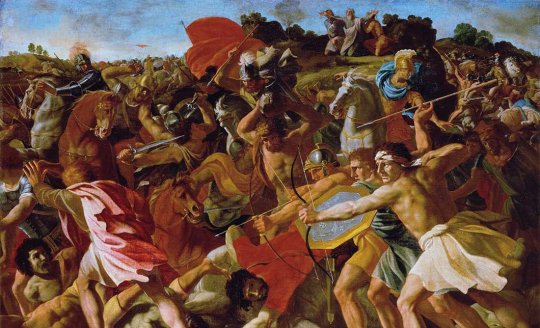
The Sinai Desert was still pitchy-black when Lt. Djer’s adjutant, Corporal Tem, shook his commander’s shoulder to awaken him. The lieutenant immediately arose—his training at the Royal Egyptian Army Military Academy (Heliopolis) stood him in good stead. He sat on the edge of his cot, blinking and collecting his thoughts.
"The Lieutenant sleeps with one eye open, so he does,” Tem said later to Mariamne, the Jebusite barmaid at the North Sinai Bar & Watering Hole (Special Discounts for Egyptian troopers with our Comfort Women).
“Do tell,” said Mariamne, leaning over the worn-wooden bar, and bending towards the Corporal, in a way good for business.
Mariamne’s a good ‘un, thought the Corporal. She don’t talk much, but what she says, I like. I really should spend more off-duty time with her. Hm.
“And there’s nobody like the Looey for the way he sits a horse, neither,” said the Corporal.
Mariamne continued her part of the conversation by bending over further—she was a woman of few words. For good measure, she wiggled her considerable rump.
By the beard of Osiris, thought the Corporal, if she bent over any farther, I could see her navel.
Tem drained his barley beer and asked Mariamne, “What say ye to another one of these little beauties? And have one, yourself—on me.”
Mariamne smiled. She was missing a canine.
The Corporal didn’t care.
Back in his tent, the Lieutenant woke his mind gradually, and contemplated the day: Today, we pull patrol-duty in our Northwestern Sector, he thought, I must set a good example for my troops.
“It will be blasting-hot today in the wilderness, Sir,” whispered the corporal.
The lieutenant smiled ruefully. “It’s always hot in this furnace, Corporal,” he said, tersely. “Have the sergeant-major rouse the troops—quietly. We are on full combat alert, as befits us chosen soldiers who guard the Blessed Boundaries of Holy Mother Egypt from any invaders or ravagers.”
The corporal nodded, saluted, and disappeared into the dark.
The lieutenant did his morning toilet, dressed in his cotton undergarment, and began buckling on his bronze body armor. Djer’s armor fitted a bit more snugly than usual. He had gained a few pounds on his last leave to his home village. His parents raised sweet dates, plums and figs on a little farm close to the Nile River. Pa’s sweet melons were legendary for their size, heft, and color, and he regularly won first-prize in the farmers’ market. Patting his belly—I really must lay off the sweets for a while—Djer left the tent to inhale the pure, sweet desert air, tinged by a salty breeze from the Sea of Reeds to the north.
“We await your orders, Sir,” came a voice from the shadows, which he recognized as that of Sergeant-Major Joser, his aide-de-camp in commanding 18th Regiment, Royal Egyptian Cavalry (“Jaws of Anubis”). “Will you be desirous of mounted chariots, Sir? It would not take but a half-hour to ready them for patrol and possible combat.”
Djer had thought about this the previous evening, and decided. “It will not do for the sake of maintaining mounted silence to take the chariots,” he replied, “on the chance that we encounter a desert tribe of Bedouin, and require a surprise attack. No, Sgt-Major; this day, our troopers will ride their mounts.”
“Very good, Sir,” said Sgt.-Major Joser, “I will have the troops ready their horses. All will prepare the saddles meant for warfare, not parade.”
“Do so,” commanded Lt. Djer.
Less than a hour later, the copper bugles sounded, and the 18th Regiment was under way.
“Which direction, Lieutenant?” asked the Sergeant-Major.
“Let us head towards the Sea of Reeds,” answered the lieutenant, “just to find any stragglers from that escaped mob of Israelite slaves. We are under orders to—deal with them.”
“Deal with them by what means, Lieutenant?” asked the Sergeant-Major. He was a grizzled veteran of many encounters with Egypt’s many enemies. An eye-patch gave evidence of the Old War with the Nubians.
“By any means necessary—including killing,” returned the lieutenant. I hate to think of murdering innocent women and children, even if they are Israelite, he thought. Still, we are under the orders of Capt. Sobek, who is in constant touch with the High Command at Royal Egyptian Army Headquarters. I have no choice.
The soldiers rode along in silence, whispering only when necessary. A blood-red sun was rising in the east. There was no sound, except the creaking of saddlery and the clank of lances against bronze armor.
“Sir,” said the Sergeant -Major, “We must halt, to allow Siptah, the Jebusite Scout, to study the trail and tell us what to expect.”
The lieutenant nodded. Siptah, agile and alert despite his advanced years—he was at least forty—practically vaulted over the head of his horse, and, lying on the ground, began sniffing eagerly, like a desert dog. Djer looked on in disgust—how could a human being, made in Osiris’s image, degrade himself into sniffing at the offal of passing animals? Still, he had to grant Siptah some credit—the scout was nearly always correct in his trail-judgment, and—besides an uncomfortable, earthy smell the scout had—Why can’t he wash more often? Djer would ask, holding his breath while he spoke with him—he was a pleasant enough fellow, and a great warrior, besides.
“What news, Scout?” he asked.
The elderly Jebusite grinned and rose, not bothering to dust the desert-sand off of his arms and legs. Arms akimbo, he stood before the lieutenant, not bothering to salute.
“If it please the Lieutenant, Your Worship—” began Siptah.
“Just Lieutenant will do, Siptah,” said Djer, fanning the air before his face. How can the poltroon live with himself? he thought, breathing through his mouth, “Give your report, please.”
“Israelites passed by—oh, perhaps one-two hours ago,” said Siptah.
“Good; we will shadow them, and make certain they are moving well out of Imperial Territory,” answered Lieutenant Djer.
Siptah raised one gnarly hand. “I have more to report, Lieutenant,” he said, and his grinning face grew grim, “There is also a war-party of Amalekites following the Israelites, perhaps just one-half hour behind.”
A voice from behind Djer called out gleefully, “What luck! Let the Amalekites finish what we ought to have done to those evil Israelites!”
Without turning, the lieutenant called out, “At ease, Corporal Henut! I called for silence in ranks!”
“Begging your pardon, Lieutenant,” returned Henut, “but I have more than a bone to pick with those abominable Israelites—they laid waste to my homeland, including my father’s little idol-shop! That Invisible God of theirs, jealous no doubt of my father’s stock-in-trade, caused it to be crushed beneath the weight of that insidious hailstorm. I hate those Israelites with every fibre of my being.”
Nodding at the Sergeant-Major, Djer ordered the detachment to halt.
“Military Police Detail!” ordered the lieutenant, “Apprehend Corporal Henut, and bring him to me.”
Henut found himself bound in papyrus-ropes, standing before his commander.
“Corporal Henut,” said the lieutenant, “for speaking out in ranks, and for contravening a direct order—”
“Begging the lieutenant’s pardon,” interrupted Henut, “What order was that?”
“Our orders are to shadow the Israelites, not to attack them,” answered the lieutenant, “nor to aid or abet any other people or nation who choose to attack them. We are merely in an observatory capacity.”
“Yes, Sir,” said Henut, sullenly.
“And for your outburst,” answerered Djer, “I am reducing you in rank to Private, and fining you your next three weeks’ wages. I run a strong, proud outfit, Private, and I will not have rapscallions such as yourself besmirching our unit’s record. MPs! Keep him under close guard, and, once we return to the Forward Operating Base, he is to go into the stockade for one week.”
The MPs led Henut away; because the unit was in the field, he was allowed to re-mount his horse, under their watchful guard. The detachment spurred on, again.
“What is that noise I hear, Sir?” asked Sergeant-Major Joser, “Is it the sound of rejoicing? Are the Israelites observing one of their pagan festivals?”
Lt. Djer listened. “It is not the sound of rejoicing or singing,” he returned, “It is the sound of war—hear the women’s screams!”
As the cavalry detachment mounted the hill, they beheld a ghastly sight: a band of Amalekite Bedouin marauders were attacking an Israelite refugee line—only, instead of attacking in front of the line, where the soldiers and young men were, the Amalekites were deliberately slaughtering helpless elderly, women, and even children.
“What shall we do, Sir?” asked the Sergeant-Major, “Our orders are explicitly to shadow the Israelites, and not interfere with their Exodus from our nation.”
“Still,” mused the lieutenant, “The orders said nothing about the deaths of the innocent.”
“What are you suggesting, Sir?” asked the old sergeant-major, already guessing what was on his young commander’s mind.
“Sergeant-Major!” commanded Lt. Djer, himself unstrapping his bronze short sword, as well as his cavalryman’s knife and shield, “I order you to have the bugler sound the ‘charge,’ so that we can redress the imbalance between civilian Israelites and armed desert bandits.”
“You heard the Lt. Djer,” called out the Sergeant-Major to the young bugler, “Prepare to sound the charge, on his order!”
“Wait a second,” said Djer, half-turning in his saddle to face his troops.
“Soldiers of Imperial Egypt,” he said in a stentorian voice, “I am commanding you to join me in defending a group of helpless elderly, women and children from a mob of murderous Amalekites. You know our enemy: he is merciless, and so must we be. If you bear any ill will towards the Israelites, you may remain back here with our Military Police, and there will be no repercussions, given the unusual nature of this military encounter. I will bear full responsibility. I do hope and expect that every man-jack of you will gain great honor for both our Mother Egypt this day, and for Anubis, for whose ferocity and fairness our regiment is named. Will you join me?”
To their credit and the lieutenant’s satisfaction, the troopers nodded and saluted, to a man.
“Sergeant-Major Joser!” ordered the lieutenant.
“Sir! Sergeant-Major Joser reporting. What is your pleasure, Sir?”
“You know the drill,” replied Lt. Djer.
The Sergeant-Major saluted.
“I want first through third rank arrayed for a charge, with full spears aloft, and khopesh-swords easily at hand. Every man must have his service dagger close to hand, as well—those Amalekites are treacherous, and we must guard ourselves.”
“Troop of Cavalry, Atten-hut!” called the Sergeant-Major.
There was the simultaneous clank of war-spears being placed in position astride the horses, and then, the thunk of swords being removed from their scabbards and laid across the saddles, putting them within easy reach. The troopers had small shields, as well, but hardly ever used them; it would have taken an extra pair of hands, and the Royal Armory had never thought of that.
“Soldiers of the Egyptian Empire!” called Lt. Djer, “If there is among you a man who has no stomach for this fight, then I will personally mount him upon an onager—backwards—“
The men laughed.
“…And send his cowardly arse back to Egypt, which bore him illegitimately. Let him depart! His passage shall be made, and I will place the coins of passage in his purse. Shame to him, and his family, forever! For we would not die in that man’s company that fears his fellowship to die with us.”
The men cheered their commander; beneath Mt. Ebarim, the Amalekites ceased their depredations for a second: What manner of men are these?
“We will remember, with advantages, what feats you will do this day. We few, we happy few, we band of brothers; for he today who sheds his blood with me, shall be my brother. And fellow-soldiers barrack-way shall think themselves accused they were not here. We will not heed; we will defend our land.”
“Troopers, take your positions!” ordered the Sergeant-Major, “and the strength of Ra be with ye.”
“CHARGE!” called Lt. Djer, as Qir, his enormous midnight-black warhorse, thundered down the slope of Mt. Ebarim, followed by the troopers of the 18th Regiment of Horse (“Rays of Ra in His Glory”). “Charge, my heroes! Charge, charge, charge!” The bugler’s calls matched the lieutenant’s own eagerness for the battle.
Perhaps it was memories of his success in Lance Drill at the Heliopolis Military Academy (Division of Horse), or his many exercises riding with the Heavies (for so did the Royal Egyptian Army term the unit they had prepared him for) but, as Qir raced down the grassy, stony slopes of the mountain (and Ebarim was not large, as mountains go—certainly not so large as that Sinai, where the Israelite rabble were to receive their Laws from their Invisible God, just two weeks later), he could not help but notice his Sergeant-Major, stubbly beard and all, muscles bulging—how old must he be? Asked Djer, foolishly--clinging to his mount, holding his sword’s-point low, as the Sergeant-Major had learned from his own riding-master, Captain Khepesh, so many years ago. Worse yet for the Amalekite beasts, the cavalrymen wielded the khopesh, a monstrous weapon with a curved, hooked blade, which clung to its target and ripped a bloody groove when dragged across human flesh, as the Egyptian troopers were trained to do.
The Amalekites were surprised, as Djer had known they would be. As he thundered past a large boulder and made for the nearest Amalekite marauder, Djer could not help but notice the man’s garb: dusty, filthy desert robes, his head covered with those dirty keffiyehs they wore. The Amalekite had grabbed an Israelite wench by her long, black, shiny hair—at least, it had been shiny before his dirty hands had besmirched it; Djer slowed his horse enough to level his blade, and inadvertently saw a glance of Israelite breast—but then, he swung his brazen khopesh, and sent the Amalekite’s head spinning off into the brush.
There’s one less bandit to deal with, thought Lt. Djer. It never crossed his mind that he had killed a man; in the heat of the battle just beginning, he was aware only of Qir’s muscles between his thighs, and glanced both left and right for further targets. He turned Qir’s head, and made for a big, muscular Amalekite whose arms were covered with golden bracelets—doubtless he had been killing Israelites with his huge, blood-dripping scimitar, and robbing them of the Egyptian gold they had collected for—how long was it?—four hundred years of back pay.
Djer did not begrudge the Israelites their booty; he was concerned only with the Amalekites, who had attacked the Israelite rearguard in a most cowardly fashion. Keeping his sword’s-point low, as his Riding-Master had taught him in cavalry maneuvers, he gut-ripped the innards of two Amalekites, who realized finally that the gleaming soldiers of Egypt were not there to assist them in despoiling the Israelites. The two hapless marauders fell beneath his blade, rolling off from the shock. Djer turned to look for his next target. Big Qir panted beneath him, but he did not worry: his steed was sufficiently exercised and ready for battle. Suddenly, he heard a cry:
“Sir—be alert, Sir! Behind you!”
Djer turned, in time to see Private Hotep, he who had refused to fight the Amalekites, drive a charging-lance’s brazen point into the back of an Amalekite warrior who had been about to eviscerate Djer. Hotep yanked the spear out, and, holding it aloft, seemed mesmerized by its dripping blood:
“Ho, Bloody Lance!” called the Sergeant-Major, “you have tasted the blood of an enemy—you are now a true warrior!”
Hotep grinned and waved his weapon above his head.
Not now, you fool; now is no time to congratulate yourself, thought Djer, and he dug his heels into Qir’s sides and raced to attack the big Amalekite ruffian who was running at Hotep from behind—luckily, the Amalekites had none of their swift dromedaries; they would have been able to give an overwhelming fight to the novice Egyptian cavalry recruits, had they not been on foot and surprised by Djer’s sudden salley on their numbers.
The Big Amalekite ran, and the point of his scimitar stabbed deep and straight and true: the grin on Hotep’s face suddenly changed to that of searing pain, and he toppled off his horse, still clutching the spear.
“Lay your foul hands on a soldier of Egypt, will you?” screamed Djer, and he charged the Amalekite, who—too late—tried to turn and hide behind the massive boulder. Yanking Qir’s bridle to the right, Djer succeeded in racing around the boulder’s circumference without being unhorsed—to be alone and defenseless in the midst of an Amalekite mob of marauders was to be avoided at all costs; they were famous for stripping their prisoners and planting a huge ant-hill on their groins—Djer readied his lance; he had finished first in the Academy riding competitions, and never forgot the day he had chased and lanced a jackrabbit, there on the desert plains.
The big Amalekite showed courage: he stood, back against the boulder, and beckoned at the young Egyptian officer, crying out words in their infernal patois, and daring him to attack, while the ruffian held his scimitar in both hands, and braced himself to receive Djer’s charge—
Too late: Djer’s lance took the Amalekite full in the chest, and the enemy’s look changed from foolish courage—what was one man, on foot, to do to resist a charging steed bearing a determined cavalryman?—to glassy-eyed death. Djer, uncaring and unhesitating, planted his boot in the Amalekite corpse and yanked his spear out, ignoring the foolishly-courageous Amalekite as he looked about the battlefield for more targets of opportunity. The corpse toppled and lay, still holding his useless scimitar.
My Heavies are availing themselves well, he thought; over to the left, Corporal Temnet, his aide, was successfully holding his own against a pair of Amalekites, who were determined to drag him off his horse. The Sergeant-Major, breathing hard, was thundering down on an Amalekite marauder who was trying to drag an Israelite maiden—she could not have been more than fourteen, Djer thought. These wretches!How they take advantage of these weak, exhausted Israelites! Finally, he spied three of his soldiers, long knives in hand, duelling with Amalekites with scimitars. Their sword-reach exceeded that of the Egyptians, but the cavalrymen had youth and training on their side, while the Amalekites, up since early morn, were tiring. Before he turned Qir and raced for a clump of Amalekites, Djer was pleased to see Corp. Karesh gut-stab the Amalekite leader.
Still, the savage Amalekites had plenty of fight left in them. From the distance of a bow-shot, Djer spied about three dozen of them forming up into a ragged line, the better to charge his cavalrymen, who were clearly tired after hacking and spearing their way into saving the hapless Hebrews.
“Dismount!” he ordered, “Sheathe your swords, my Boys, and ready bows-and-arrows for action!”
As well-drilled warriors, his horse soldiers were also skilled in the use of the deadly Egyptian composite bow, a fearsome weapon when used en masse to fire volleys of lethal shafts.
“Form up!” called the lieutenant, “Form a skirmish line, men, and present arms!” referring to the bows-and-arrows. Tipped with primitive but effective chunks of sharpened glass or volcanic obsidian, the arrows were particularly effective. When the brutes charged, Djer’s men would be prepared to receive them.
“Steady your line, men!” he called out, while the Sergeant-Major rode along the front of the skirmish-line, to steady and straighten the cavalrymen.
With blood-curdling screams, the Amalekites charged. No more were their thoughts about seizing booty or women; they wished only to rid themselves of the Egyptians, who had appeared seemingly out of nowhere to ruin their ravaging of innocents and their property. By this time, Djer had ceased to think of the escaped Israelites as a leaderless, troublesome rabble; to his soldier’s eye, they were the innocent victims of a mob of armed peasants. He recalled two years before when, fresh out of Academy, his then-Captain Pramet had ordered him to lead his men into attacking a rear guard of retreating Hyksos.
“Drive them out, drive them out, 2nd Lieutenant Djer!” the captain had bellowed, “for they have dominated us native Egyptians for the past hundred years! Drive them out, I say!”
The Hyksos, for all their bluster and overreach, had left the Royal Egyptian Army a significant war-wagon: the chariot. Nonetheless, Djer had led his then-troopers, the 257th Regiment of Horse (“Head of Anubis”), in a final charge, which sent the Hyksos packing, back to Palestine, where these Israelites belonged, as well.
But that was different, Djer thought quickly, those Hyksos were seasoned warriors, and gave us one hell of a fight, before riding off to quit Egypt for good. These Israelites are but liberated slaves, leaderless and helpless....
No time for further reminiscing, he thought, Now is the time for one final assault on the Amalekite line—if one could call it even a line.Let our troops totally destroy the memory of Amalek from beneath the heavens, and never forget them.
“Form up, form up, my brave boys—no, today you are men, for certain!” he heard the orders of the Sergeant-Major, “Let us charge this rabble, and drive them away from Mother Egypt for good!”
As he watched approvingly, his tired but eager soldiers formed a line—
It would be straighter still, he thought, had they not been so tired from a morning’s fighting. Still, my boys do me proud.
No more time to think or plan, he thought, seeing the Amalekites, themselves tired but still wielding their deadly slings and war-clubs, and readying for a final charge. O Anubis! Guard Thou Thy namesake soldiers today, and shield them from the weapons of the infidel!
The Amalekites charged. The Egyptians did not panic; as was customary, they listened for the orders of their commander. Djer kept a weather eye on the lumbering enemy, who was getting closer and closer, eager for the blood of his young troops.
“Steady, men—steady, steady—let the savages get as close as an arrow can carry for its strongest and most effective result!”
This was a euphemism; the Egyptians had been known for millennia for the deadly arrows they carried, some dipped into black-adder-oil for a poisonous result.
“Steady, men—they grow closer—ah, here they have come, to receive our Egyptian welcome—fire, Men! Fire, fire, fire!”
The arrows sped off straight and true, and Djer heard the deadly thunk as each one found a target. The Amalekites either dropped in their tracks, spilling their stolen gold from pouches or beneath their ragged tunics. Others, only wounded, turned to flee. Djer knew it would take a short while for the poison to do its work.
Nevertheless, the battle was practically over.
“D Troop and F Troop!” the Sergeant-Major called, and Djer nodded in satisfaction, “Pursue the enemy closely, and be prepared to give him the edge of your khopesh or spear. Let us discourage him from ever re-entering the boundaries of Holy Mother Egypt!”
With a shout, the men of those troops spurred up their horses, and set off after the Amalekites—but at a safe distance, in case the wretches should re-form and attempt a final charge. Djer doubted that that would happen, however; the Amalekites had been decimated, and were heading to their lairs in the caves of Mt. Seir.
These boys are the flower of Egypt, he thought. I am very lucky. Sleep safely in your Royal Bed tonight, Holy God-Pharaoh Merneptah!
At last, it was over. the Amalekites despaired of stealing any more gold, and left the women they would have raped, where they lay, in various stages of undress. Off they ran, helter-skelter, while the Sergeant-Major despatched Companies C and D to pursue, careful not to fall into an ambush or trap.
Lt. Djer, his lance still dripping with Amalekite blood, gathered his command staff beneath a tree in an oasis of palms, and asked them to give report. Out of the corner of his eye, he beheld the young Israelite wench approaching; her long black hair blew softly in the desert breeze, and she met his curious glance with a smile.
View halloo, thought Lt. Djer foolishly, Whose little girl are you?
The girl made to grasp Qir’s bridle, but the young lieutenant shook his head: “I’m on duty, Miss,” he said.
The Hebrew girl smiled and tossed her head. “I will wait, General, until you are off duty.”
“Lieutenant,” mumbled the embarrassed cavalryman, “I am but a Lieutenant.”
“Lieutenant, then,” said the girl, “How can we ever repay you?” And she fluttered her lashes at Djer.
For the young Egyptian officer, it had been a successful day of combat against a mortal enemy and harasser of his nation’s camel caravans between the Homeland and Nubia, and points West, into Africa.
Still, he thought, how to justify an Egyptian military unit protecting a ragtag mob of Israelites? He would have to think about that....
“I was speaking to you, My Brave Lieutenant,” said the Israelite maiden. Djer looked at her through the scalp-wound he had suffered in combat, “You are wounded. Dismount your noble steed; I will bathe your wound.”
Still in a post-battle daze, Djer allowed himself to be persuaded: he, like his triumphant soldiers (several of whom were cheering a Song of Victory to the Pharaoh Merneptah) needed some rest after the rigors of their morning.
He stepped—no, more like falling—from his horse, Qir, and the Israelite girl—was she sixteen? No, seventeen was more like it—
She caught him as he staggered.
“Come with me, come with me, Sir Lieutenant,” she smiled, “You and your men are our saviors. Moses is nowhere to be found, and it was Adonai’s will that a troop of brave Egyptians should ride to our rescue. We owe you our lives.”
Numbly, Djer nodded, letting the girl lead towards the pleasant grottoes near the Sea of Reeds. As his consciousness returned, he saw she was a saucy minx—not at all like the stiff, aristocratic women his parents were always arranging liaisons with. She was short, but, even beneath her black robes, well-proportioned. His head ached, and he needed sleep—just a little sleep....
She took him by the hand. “We owe you our lives,” she said again, and he nodded.
“It was nothing—” he said, “Any conscientious soldier would have done exactly what I—what we—did.”
She stopped, and her dark-brown eyes stared into his.
“Nay,” she said, “My Lord Officer, I disagree. For, as I said, our God willed that you should save us from death, or worse. I must reward you....”
In the coolness of the grotto, she was as good as her word. Beneath her robes, she was dirty from the desert, but enticing and full of secrets.
Afterward, Djer felt better: his Israelite maiden had been as good as her promise.
“What is your name?” he asked, resting his head on his hand, as he rolled to a side-position.
“Delilah,” she answered, showing a mouthful of perfect, straight teeth which gleamed pure white in the darkness of the grotto, “My name is Delilah. And yours, My Hero Captain of Cavalry?”
“Lieutenant,” he corrected her automatically, “’I am but a lieutenant. And my name, My Dear One, is Djer.”
The girl stretched contentedly, like a desert cat.
“Djer—Djer,” she repeated, “I think that I—love you. And you know, Lieutenant, that according to the laws of my tribe, our coupling makes us man and wife.”
Djer was astonished: it was not the first time that a rescued victim had rewarded him in such a way. He quickly rose, dusting the desert sand off his uniform.
“I am not familiar with your laws, Miss Delilah,” he said stiffly, again becoming the Royal Egyptian Army officer he was and aspired to remain, “but I must disagree. In Egyptian Law, any female captive is fair game for the victors—and the victors must always be the Army and its soldiers.”
Delilah reached out a hand; he helped her rise. Before he could resist, the little minx wrapped her arms around his body armor, and began kissing him. Protesting, Djer tried to push her away. Unfortunately, her grip was so tight, that, in so doing, he pushed her down.
Instantly, her expression changed: “You may shove me away, my mighty warrior, but you will not be rid of me so easily. Those other wenches—the Amalekites, the Hivites, and everyone else such—you may dispose of, as easily as a dog rids itself of a flea. But I am different—“
Djer had had enough. He saluted, and said in a formal tone, “Good day, Madame. I must return to my troop. Thank you for your acquaintance, but it ends here.”
Before he could resist or protest, the girl flung a handful of red dust in his eyes. Strangely, it did not sting; it melted into his eyes, not affecting them.”
“Hye, Zye, Hine,” the girl intoned, “Now, you are mine.”
Djer turned on his heel. “I am my own man, Miss Delilah,” he said angrily, “and our friendship is over.”
“Think not so,” whispered the girl, “for I will stick to you as bark to a tree; as needles to cactus; as the tapestry which hangs over the Pharaoh’s Royal Throne.”
Djer walked—no, marched away; as he did, he heard the girl laughing—a curious mixture of human laughing, and a cat’s howling. He thought nothing of it.
Rabbi David Hartley Mark is from New York City’s Lower East Side. He attended Yeshiva University, the City University of NY Graduate Center for English Literature, and received semicha at the Academy for Jewish Religion. He currently teaches English at Everglades University in Boca Raton, FL, and has a Shabbat pulpit at Temple Sholom of Pompano Beach. His literary tastes run to Isaac Bashevis Singer, Stephen King, King David, Kohelet, Christopher Marlowe, and the Harlem Renaissance.
#progressive judaism#judaism#jewish#torah study#drash#tzav#tsav#zav#sav#parsha#weekly parsha#rabbi david hartley mark#shabbat#shabbos#sabbath#oneshul
0 notes
Text
Burial of a Hero
February 19, 2019
About a year ago, I wrote about the death of one of my Navy friends, Captain Zip Rausa. Zip and I served on board the USS Coral Sea during two cruises in the middle of the Vietnam war. Zip was a pilot in my squadron and I was the Intelligence Officer for the squadron.
Zip and several other pilots, on February 7, 1968, performed some heroic acts that saved the lives of seven Army Special Forces guys who were being attacked in a bunker by a big contingent of NVN forces. I have written about the story before. The point is, Zip was a true hero, not someone who has been called that just because they served in a war, but because how he risked his life for others...the highest calling for a military man.
On January 25, 2019, Zip was finally buried in Arlington National Cemetery, with full military honors. My wife and I attended the ceremonies. Even though I lived in the Washington DC area for 30 years, I had never personally attended a ceremony like this. It was an awesome experience.
The night before, 8 of Zip’s former squadron mates, along with their wives and a contingent of Zip’s family...brother, wife, children and grandchildren, had a private dinner at Clyde’s of Georgetown. We all got the chance to relive our memories of Zip and to renew acquaintances from years past. It was a memorable evening.
The next day, we all met at the Old Post Chapel, a historic church located immediately adjacent to Arlington Cemetery, to celebrate a Catholic mass in Zip’s memory and honor. Incidentally, the last time I had been at that chapel was almost exactly 13 years ago, when my youngest daughter married an active duty Marine there.
When we arrived there, the Navy band and color guard were already there standing in the cold and intermittent snow. Also there was the horse drawn caisson with a flag covered coffin.
After the mass, the band and the carriage marched to the grave site, and we all followed in our cars. When we reached the site, there was a small tent set up for the family and the rest of us stood around the tent. Also there already was the honor guard holding a flag over the burial urn. The minister said a few things and quoted some scripture, then the band played the Navy Hymn. Then, there was a 21 gun salute by seven riflemen. Then the honor guard folded the flag, and the attending officer knelt and handed it to the widow, with the famous words...”A grateful nation....”. Then, a lone bugler sounded “Taps”. There was hardly a dry eye around.
Even though we all have seen this ceremony on TV and in the movies many times, there is no way to understand its power and meaning without being there in person. We all were truly touched by the dignity of the ceremony and the precision of the military who put it on. As a nation, we are eternally grateful to them.
0 notes
Link
Robert Bean enlisted in the military Memorial Day weekend in 1979 under the delayed entry program. He spent a combined 40 years in the U.S. Marines and the Massachusetts Army National Guard playing the trumpet that included being a bugler and playing TAPS at funerals.
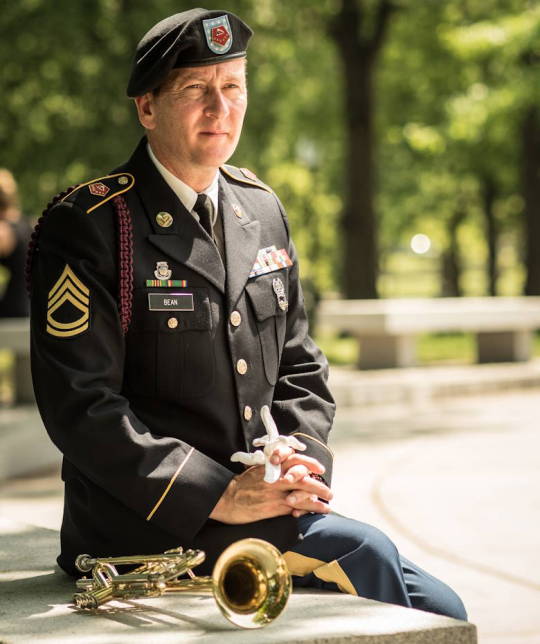
0 notes
Photo

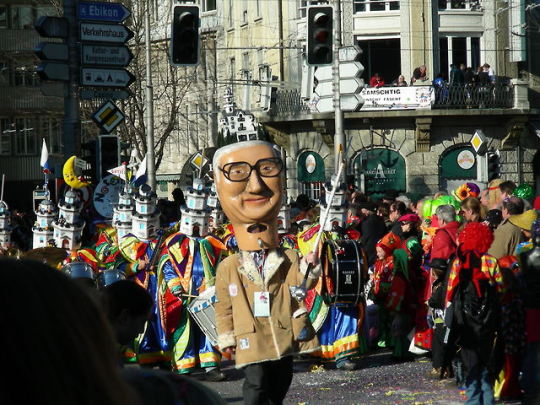
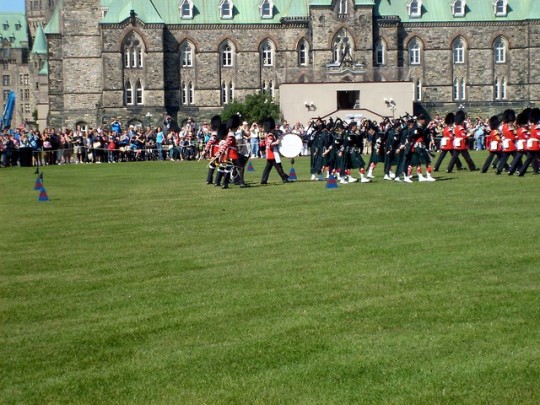

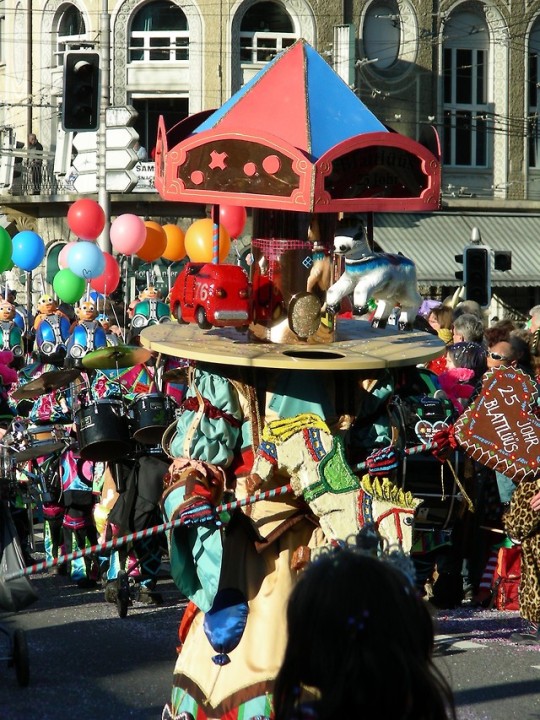

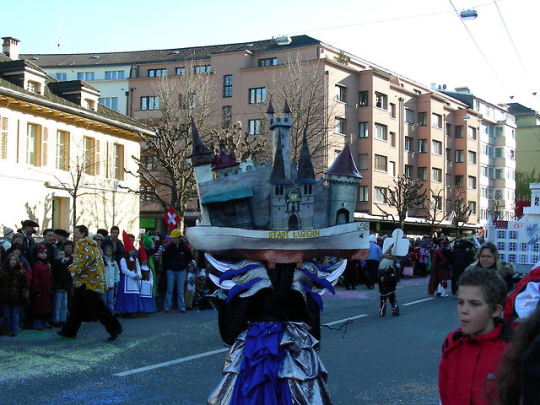
MARCHING MUSIC DAY
March forth to the rhythm of life on Marching Music Day every March 4. In honor of dedicated musicians and performers of many diverse styles and backgrounds, Marching Music Day celebrates all varieties of the art forms bringing us “music on the move.”
For centuries, the beat of a drum has kept military units moving in unison. From the training field to the battlefield, the football stadium to the Broadway stage, small gyms, auditoriums and grand arena spectacles, fifers, pipers, buglers, drum corps, marching bands, parade groups, drill teams and color guards bring music to life to the delight of millions of performers and spectators.
The military roots of the drum corps have evolved into an art form which moves us during somber memorials and thrills us with their ability to perform delightful music while executing intricate routines with exact precision. Drill squads, marching bands, drum lines, and drum corps name but a few of the many styles of marching music which have developed over the years, engaging hundreds of thousands of performers of all ages, abilities and experience levels.
We see marching music in schools, military units, community celebrations and local auxiliaries. The music is as varied as the ensembles themselves. Instruments may be limited to brass in some settings or may include woodwinds and electric guitars in others. Dance teams, baton twirlers and color guards perform to soundtracks ranging from traditional, standard marches to rock and roll, jazz, contemporary and electronic dance music.
And marching music keeps changing! Spectacular string bands incorporate their own unique sound and elaborate costuming. Technology has brought about the production of lighter, electronic and digital instruments making it possible for musicians to march with violins, cellos, basses and synthesizers to entertain crowds in unique and creative new ways.
HOW TO OBSERVE
Support your local marching music groups by attending their performances, backing their competitions, contributing to their endeavors or becoming one of their musicians. Whether it’s through a school, a veterans group or an independent ensemble, they will appreciate your support.
HISTORY
Drum Corps International founded Marching Music Day to celebrate marching music as an engaging and ever-expanding art form around the world, and to help celebrate Music In Our Schools Month. As an ideal play on words, March Fourth was chosen. The Registrar at National Day Calendar declared the day to March fourth into celebration annually, beginning in 2017.
Source
#blattlüüs#noteheuer#guuggenmusig#lozärner fasnacht#old pics#2007#tambourmajor#marching band day#4 march#4 march 2019 is güüdis mäntig#carnival band#the best carnival in the world#luzern#lucerne#schweiz#switzerland#ottawa#summer 2009#changing the guard#parliament hill#canada#ontario#landmark#tourist attraction#travel#vacation#cityscape#grend#fasnachts umzug#carnival parade
0 notes
Text
THINGS TO DO IN CANBERRA

Canberra is a buzzing city with loads of attractions. Discover the best things to do in Canberra with our bucket list. Take a rejuvenating city break and discover the many illuminating facts and explore the amazing places in the beautiful city of Canberra.
Australian National Botanic Gardens
On Black Mountain's lower slants, these expansive patio nurseries grandstand Australian flower decent variety more than 35 hectares of developed garden and 50 hectares of leftover bushland. Different themed courses are set apart out with the best acquaintance being the primary way, which takes in the eucalypt grass. The main loop is around 1.5 km of mostly flat terrain and well marked paths. Glasshouse features ferns and pitcher plants and while treetop walks show colours & rainforests. You can explore numerous paths. Electric Bike tour is popular activity. Birdlife is abundant and it is not uncommon to see lizards sunbathing on rocks. There are numerous species of plants which flourish and are well guarded. You can see crevasse in the rocks and through it the view of garden plants are unique. A 3.2km bushland nature trail prompts the garden's higher scopes.
Lake Burley Griffin
Huge manmade lake was created in 1963 and was named after the architect and designer Walter Burney Griffin who created Canberra with the most novel & modern geometrical patterns. Lake Burney Griffin is set against the back drop of distant New South Wales. There are separate tracks for cycling and for walkers at the sides of the lake. This is astonishing highlight of Canberra as the perfect water play exquisite area surfacing all the time whether you are into paddling, cruising, kayaking, stand-up oar boarding or angling. There is 40 km shoreline and nothing beats its cookout in various stops and gardens. On the way there are restaurants, eateries, rest houses and you are offered all types of food & drinks. For those who have languid moods, lack spirit and liveliness for a long course along lake, can take a voyage through ship or boat to appreciate water scenes from one of the numerous lakeside bistros and eateries.
Parliament House, Canberra
Opened in 1988, Australia's national parliament building is a smooth and profoundly emblematic bit of design. The building itself is implanted in the Australian soil, secured with a turf rooftop and bested by a spindly however taking off 81m-high flagpole. The equivalent point by point thought has been connected to the inside and there isbounty to see inside regardless of whether the lawmakers are lecturing each other in the chambers or not. In the wake of going through airplane terminal style security, guests are allowed to investigate expansive segments of the building and watch parliamentary procedures from general society displays. The main time that tickets are required is for the high performancecentre of Question Time in the House of Representatives. Tickets are free however should be reserved through the Sergeant at Arms. In the wake of entering through the Marble Foyer, fly into the Great Hall to investigate the tremendous embroidered artwork, which took 13 weavers two years to finish. Old Parliament House where meetings were conducted till 1988 was turned into a museum of democracy and this new parliament house which took 7 years in constructing at enormous cost of 1.1 billion Australian dollars was inaugurated by queen Elizabeth-II. Upstairs in the passages encompassing the lobby, there are fascinating showcases including brief displays from the Parliamentary craftsmanship gathering. There are further shows in the Members' Hall, ringed with august pictures of previous PMs. From the lobby andpassageways we can see two discussing chambers. Australia has a Westminster-style vote based system and its chambers resound the shading plan of the popular 'Mother of Parliaments' in London, with an inconspicuous neighbourhood wind. As opposed to the brilliant red of the House of Lords and the dark green of the lower house, Australia's parliament house utilizes a dim pink for its Senate and a quieted green for the House of Representatives, propelled by the tones of the nearby eucalypts. Parliament House contains 4700 rooms. The main foyer contains a marble staircase. Some areas are open to the general public and this parliament house is one of the main attractions of Canberra.
Booroomba Rocks Walk
One of Canberra's best known and revered thistle walks. This is a standard walk that starts from two separate territories with the most broadly perceived choice for walkers being to start at the Booroomba Rocks car park. Then again for those requiring a progressively drawn out walking decision, they can start at the old Honeysuckle Creek Space Tracking Station thatis additional to the Apollo Space Program. The side street is on the right hand side of the road just before the entry to the old Honeysuckle Creek Space Tracking Station campground. From the car park the trail winds it's course upwards at a constant and once in a while douse incline towards the guideline summit. This summit zone isn't the most hoisted motivation behind the zenith and remembering that giving unimaginable points of view, an additional walk around 400 meters can take you to the best audit, an area of Canberra. The trail over to the most raised point is generally hard to find with the exception of on the off chance that you understand where to look such countless avenues. The confined trails made by the stone climbing group who get to the feign look at changed core interests. Alarm is required if using these minor tracks as you can draw close to the edge if you don't concentrate on where you are going. From the most astonishing motivation behind this apex, you have consistent points of view over Canberra which in the midst of the sultrier months of the year, are amazing. The landing trip back towards the lower summit is commonly easy to find and partners you back to the rule trail. Booroomba Rocks is one of the principal shake climbing domains in Canberra with the way to the climbing dividers from the summit. The summit drops off at the edge of the stone at different territories so to manage youths and furthermore to give cautious thought to where they are walking. This is a conspicuous shake climbing zone soclimbers underneath should be extra careful. There are typically more wildflowers in the midst of the more sultry months and the zenith being at springtime.
Changi Chapel
Changi Chapel, one of thirteen worked by Prisoners of War in the Changi Prison Camp, Singapore, was worked, with the authorization of Japanese officers, as 'Our Lady of Christians Roman Catholic Chapel'. It was worked from waste and rummaged materials snuck into the camp in 1944. The church was planned and worked by Lieutenant Hamish Cameron-Smith of the British Army.
Corporal Max Lee went to Changi in 1945 with the Australian War Graves Registration Unit to help to destroy the camp. He drew designs and took estimations of the sanctuary with the expectation that it could be spared and conveyed to Australia. For quite a long time Lee heard nothing a greater amount of the sanctuary until the point when he was told in 1987 that it was put away in the Australian War Memorial's distribution centre at Duntroon. The house of prayer was hence remade in the grounds of the Royal Military College at Duntroon and devoted in 1988 by Sir Edward Dunlop, a POW and specialist in Changi, as a national dedication to every one of the 35,000 Australians taken as POW in the Boer War, World Wars I and II and the Korean War.
At the point when Singapore tumbled to Japan in February 1942 more than 45,000 Allied servicemen were taken prisoners and in excess of 132,000 work force from six countries were caught and detained at Changi by the wars' end.
Australian War Memorial
Australian War Memorial was built to commemorate the War Heroes and was opened in 1941. An exceptionally well designed large museum is attached to this memorial and this museum is devoted to country's military history. This is Canberra's glorious decoration filled with interesting architecture. At the entrance, an eternal flame burns. The walls of the surrounding cloister are engraved with the names of Australian War Heroes who died fighting in the battle fields or on peace keeping operations.
The Last Post Ceremony is held at 4.45pm every evening just before the doors are shut down for the night. In the ceremony a piper and a bugler descend from Byzantine influenced Hall of Memory.This Hall is behind the court yard, a spectacular space topped with a dome and encrusted withmosaics and stained glass. Beneath the monumental statues representing a sailor, a service woman, a soldier and an airman respectively there lies the tomb of unknown Australian soldier. The War Memorial consists three parts. The Commemorate Area (Shrine) including Hall of Memory with the Tomb of Unknown Soldier, The Memorial's Galleries (Museum) and Research Centre (Records).
The visitors gather at the entrance of the Commemorative Area. The Last Post Ceremony is celebrated with special features starting with the hosts welcoming the visitors and thereafter National Anthem starts. A brief explanation is given regarding origin of the memorial. The piper then plays "Flowers of the Forest", a musical tune as the visitors and the family members of the individual who is being honoured on that day, lay wreaths of floral tributes beside the portrait of the person whose story is told thereby in the ceremony. Australian Defence Force personnel will ascend to the balcony above eternal flame and recite the Ode. The piper and bugler will play The Last Post. At the completion of this, ADF personnel, the piper and the bugler will return to the Hall of Memory and the doors will be closed.
Australian War Memorial remains opened from 10 am to 5 pm all days in a year except on Christmas Day.
0 notes